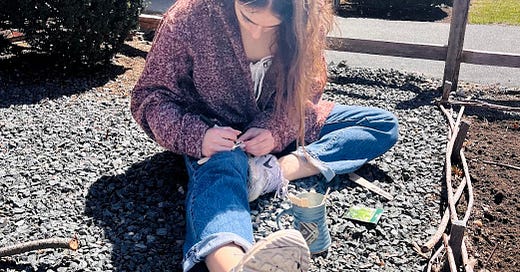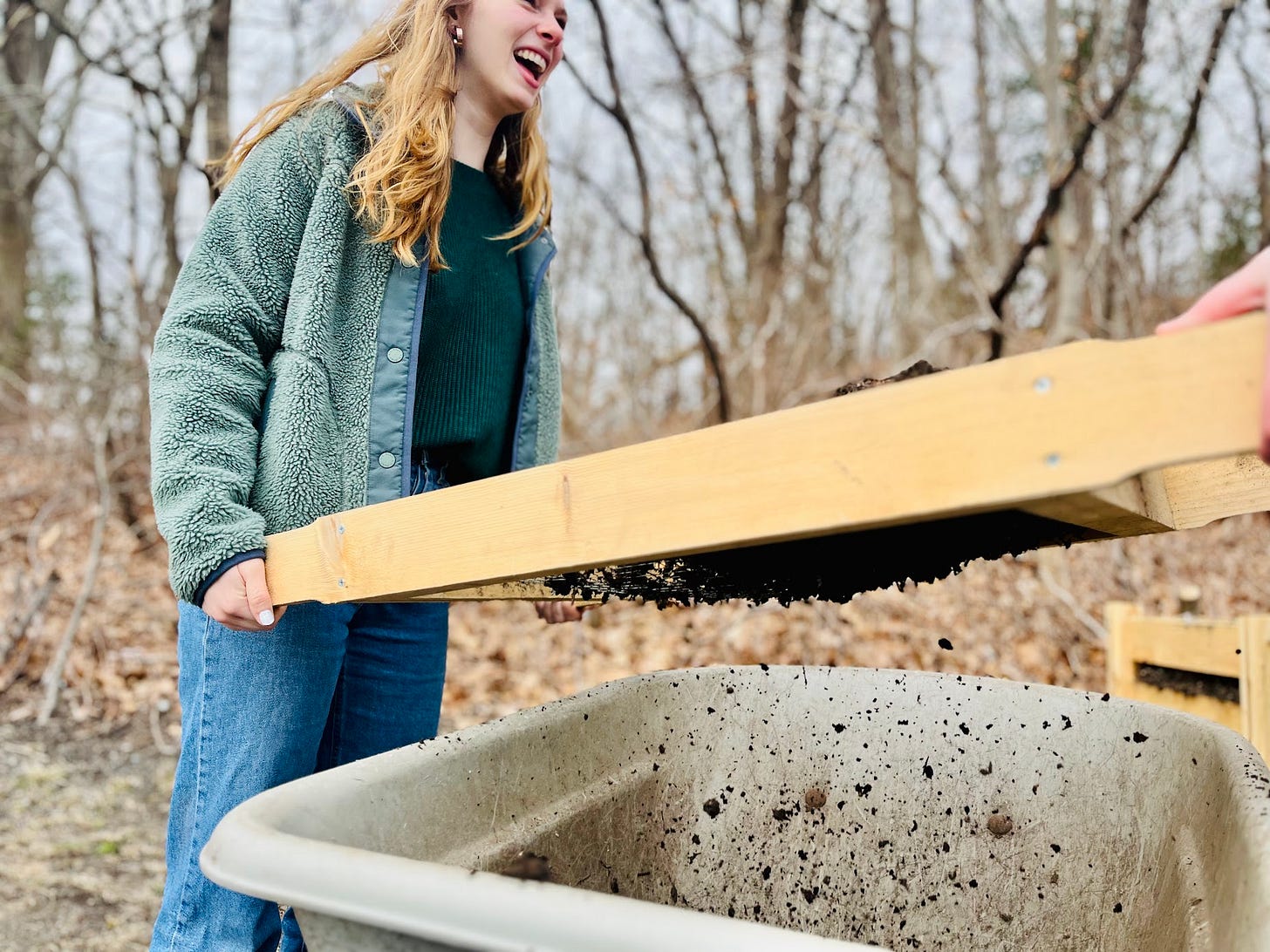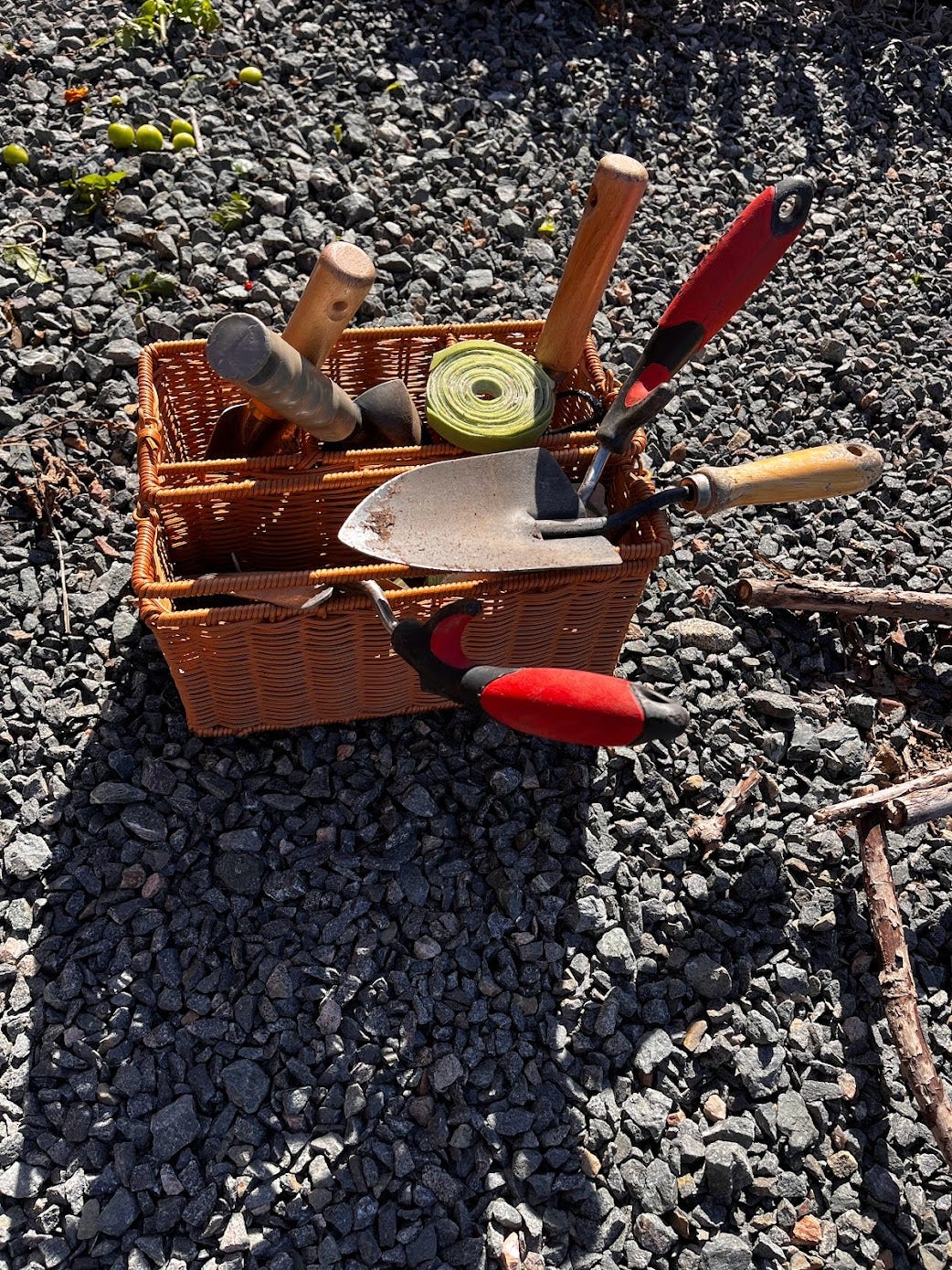Early summer morning, hauling twenty-seven brimful buckets into the orchard. I empty each one at the feet of a new tree, its clear heavy ribbon of water flashing in the sunlight. Walking from row to row, I notice a robin perched on a tree stake, puffy and proud as if it owned the place. It’s the first bird I’ve seen on this patch of grass in twelve years.
Rain in the vegetable garden. A warm smell of wet, turned earth. The moisture darkens the ground so that each tiny seedling stands out by contrast: jewels of green in even rows. Just past the fence, a fat rabbit lumbers from under the cover of a shrub. He is adorable, but he’s also the enemy.
First one to the faculty parking lot, mid-October. Pulling my briefcase from the car and shutting the door, I look out over the soccer fields. Dozens of Canada Geese are wading there, knee-deep in mist. Their cries echo across the grass, somehow confident and sad at once.
The whole alley reeks of rotting pumpkins. Pumpkins shattered at the feet of the composting center, pumpkins piled in the wheelbarrow, pumpkins skullcapped with early snow. There’s a lot of carbon in pumpkins so, when they’re breaking down, they smell like death. Lifting a spade, I smash another one into black-orange chunks and stir the wreckage into the pile. None of the students will help with this.
There’s a stranger lying face-down among the pink and yellow tulips in the orchard. Is he moving? Asleep? Something worse? I pull out my walkie—in case anything’s amiss—and walk over to investigate. I’m ten feet away before I start to hear the snick, snick of the camera lens, and finally understand. “Oh,” he says when I startle him. “I’m a photographer from up the road.” And stands, brushing the grass and pollen from his shirt and looking oddly flushed, strangely emotional. “I hope you don’t mind. It’s just—this is the best thing anyone has ever done for this neighborhood.”
What would you call the color of the new leaves on the willow at the far end of the soccer field? Cat’s eye? Pale honey? Some kind of blue?
My son, Brody, empties the last few drops from a watering can at the roots of a Morello Cherry we’ve just planted. The tree looks pathetic against the large brick wall of the school’s vegetable garden—nothing more than a three-foot stick shoved into the dirt. April morning: so cold our fingertips sting as we train the branches against the trellis wire. A bluejay is rattling off its harsh music somewhere in the pines behind us. “So when do we get cherries?” Brody asks. “Not for a few years yet,” I tell him. He sighs. “No one told me I would have to wait.”
Nothing feels as empty as a school in mid-July. Walking over the warm tarmac toward the garden, the smack, smack of my sandals startles a cluster of goldfinches from the catmint. They disappear, a little nebula of gold across the fields.
Sunny Friday, late March. A cheerful-looking man unravels a long length of hose from a coil mounted to the back end of his truck, whistling as he walks toward the grass by the school entrance, then sprays broad-spectrum herbicides over every inch: an acrid reek and a chemical hiss. He doesn’t seem to wonder why I’m staring at him.
“Mr. Miller, you’d better take a look at this.” I put down my basket and walk over to the bed, now surrounded by fresh wattling, where we’ve planted the spring herbs. At its southwest end stands a row of three dill plants, their acid-green fronds bright against the dirt. Each one is festooned with wriggling shapes: pale, wrinkly mint-colored tubes with yellow stripes and splashes of inklike black. Blue Swallowtail caterpillars, gorging on the tender growth. “What should we do?” Charlotte asks me. She’s one of the Roots Prefects and has worked far harder than I have to plant all these seedlings, water them, and raise them. “You tell me, Charlotte,” I say. “They’re your babies.” She crosses her arms, silent for a while. “Leave the caterpillars,” she says at last. “They’re a good sign.”
Someone keeps moving a chair into the little close-mowed shady space between two rows of apple trees. I don’t know who it is, but I like their style.
On a quick walk between classes: fog scraps between the fingers of the sill-bare trees. A woodpecker’s thrum from the dead pines on the hill sounds close, like he’s right next to me.
He works in one of the offices adjacent to the school: a round man in a white lab coat. Lots of lovely places on this campus now, but I always see him staring at the compost.
Like what you’re reading here? The best way to support the Classical Roots Program is to spread the word. Help us turn school inside out:







A wordsmith and a gardener...excellent combination.
“No one told me I would have to wait.”